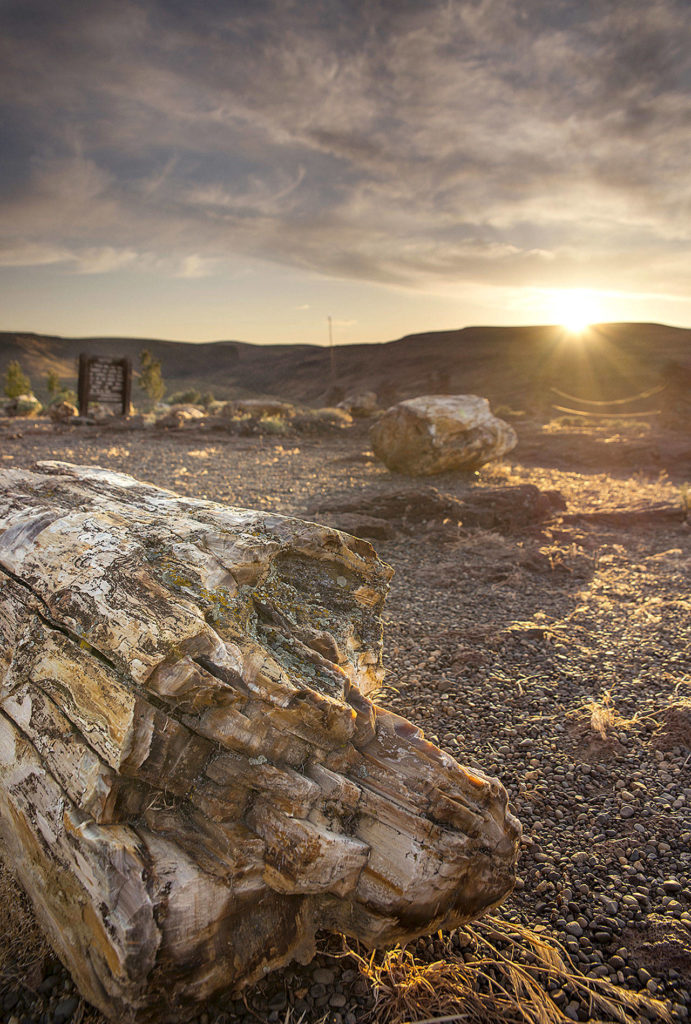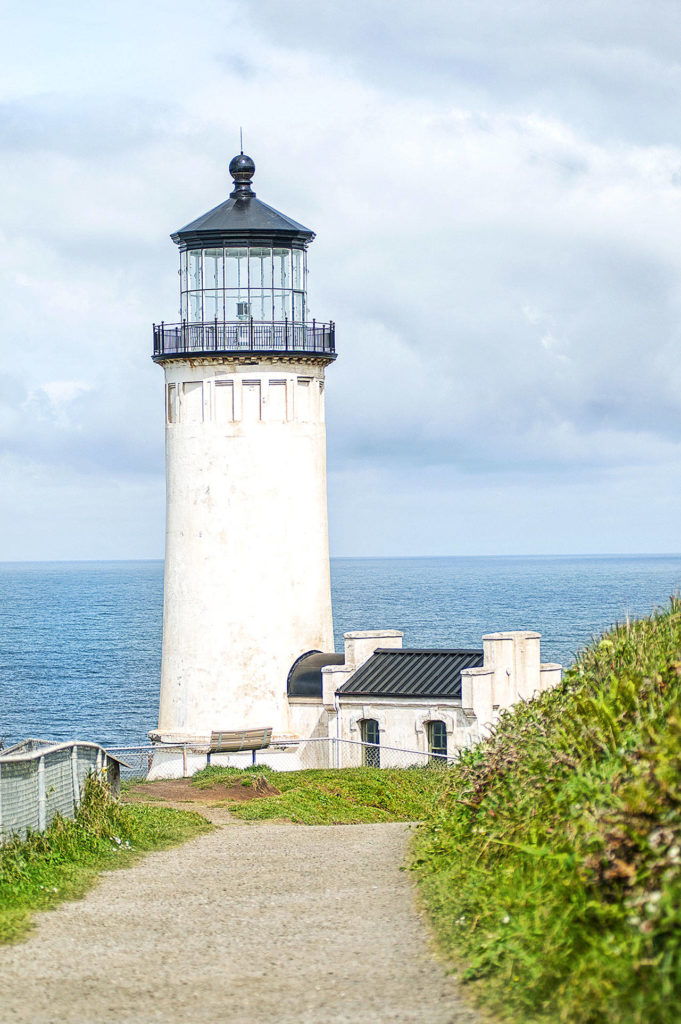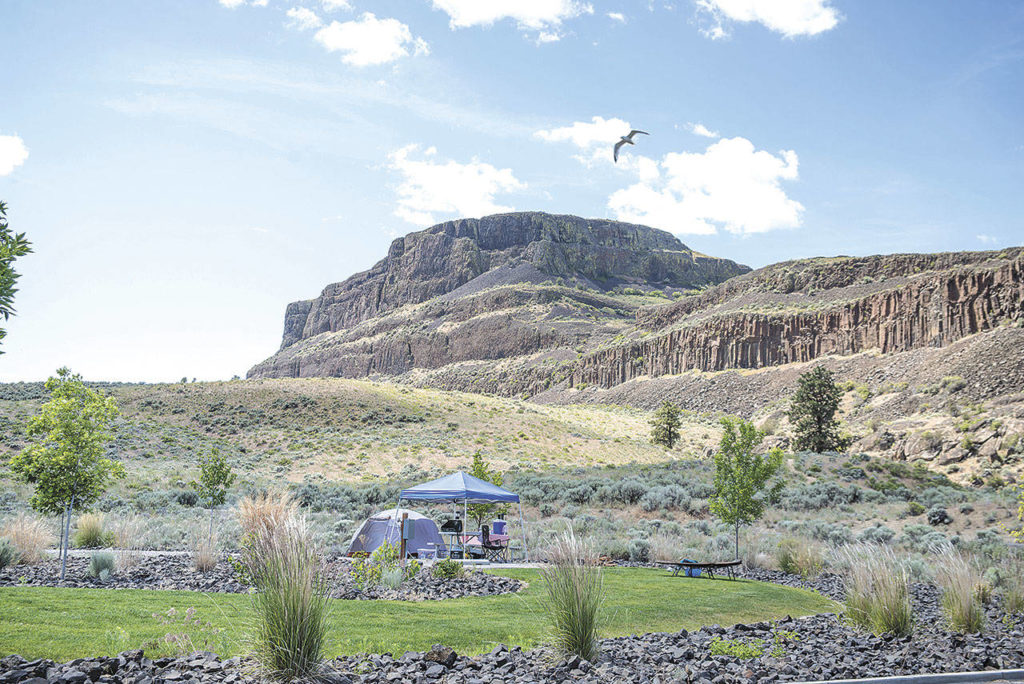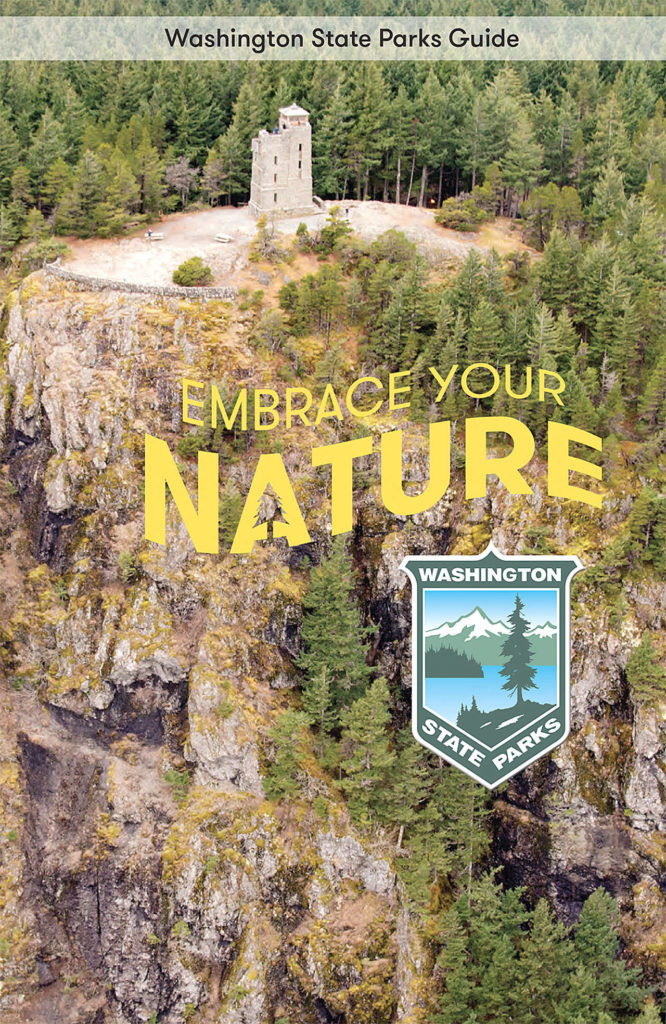The brute force of geological upheaval and eons of erosion have left spectacular sites for many of our state parks.
That’s one takeaway from looking at the newest publication to our parks, “Embrace Your Nature: Washington State Parks Guide.”
While it’s nice to camp at a river’s edge, paddle a quiet lake or walk an ocean beach, take some time this summer to enjoy the parks and their close-up views of our geological heritage.
More information is available at www.parks.state.wa.us.
Beacon Rock State Park. You have to earn the sweeping views of the Columbia River Gorge by conquering the less-than-a-mile-long multi-switchback trail to the top of the 848-foot-high basalt core of an ancient volcano.
Cape Disappointment State Park. Located at the mouth of the Columbia River, the park is an in-the-moment lesson of geological forces. The Columbia River pours into the Pacific Ocean, moving sand and silt, constantly reforming a huge treacherous sandbar, creating one of the most dangerous channels in the world. Huge waves pound away during the winter, chewing away at the beach and threatening the park’s main campground. The barrier dune has disappeared, and 10 oceanfront campsites were lost over the winter.
Columbia Hills Historical State Park. Geologic forces created the long, rolling hills along the Columbia River Gorge, with Horsethief Butte the dominate rock formation. Here, rocks served as tablets of stone. Visit a collection of ancient Native American rock art in the form of petroglyphs and pictographs.
Crawford State Park Heritage Site. Tucked away in the northeastern corner of Washington is a 500-million-year-old surprise, the 2,072-foot-long Gardner Cave. Go with an interpretative guide and marvel at stalactites, stalagmites and other features about 300 feet underground.
Ginkgo Petrified Forest State Park. They could have named it Trees of Stone State Park. The remains of one of the most unusual fossil forests, with some of the rarest forms of petrified wood in the world, is near Vantage. Learn more about petrified wood in the interpretive center. Take a 1.5-mile walk on the Trees of Stone Trail.
Moran State Park. The Orcas Island park’s Mount Constitution is the highest elevation (2,409 feet) in the submerged mountain chain of the San Juan archipelago, formed from glacial and tectonic forces. At the top is a stone tower replica of Russian watchtowers built during the 12th century. On a clear day, see Mount Baker, the North Cascades and nearby islands.
Mount Spokane State Park. The historic Vista House at the top of Mount Spokane is the best location to enjoy the largest state park (12,293 acres). The road to the summit is usually open mid-June to mid-October. Mount Spokane is much older than the Rockies or Cascades, and millennia of weathering has reshaped it into its rounded form.
Palouse Falls State Park. It’s among the last of the active waterfalls on the path of the Ice Age Missoula floods that created the channeled scablands. There are three locations to see the falls. Interpretive signs provide geological and historical background.
Potholes State Park. During the Pleistocene flooding, large depressions 10 to 60 feet deep in the desert were created, which were filled when O’Sullivan Dam was created. The park, near Moses Lake, is on the reservoir with views of tiny islands and “pothole” lakes.
Steamboat Rock State Park. Ice Age floods carved the Eastern Washington landscape, leaving the columnar basalt butte called Steamboat Rock dominating with its 800-foot rise. The butte became an island in the path of the Columbia River when it had been diverted by ice dams.
The state has many small parks, too. Several are 10 acres or less, including islands, Stretch Point, Steptoe Battlefield and Goldendale Observatory.
What are you waiting for?
Columnist Sharon Wootton can be reached at 360-468-3964 or songandword@rockisland.com.
Embrace Your Nature
The 364-page “Embrace Your Nature: Washington State Parks Guide” is larger than traditional guide books. Each of the 129 parks with two facing pages includes hundreds of photographs, a column of just-the-basics information: activities, ADA access, amenities, overnight options, reservations and contacts; plus the main features and several paragraphs of upbeat information provide a sense of place.
A separate section covers the San Juan Islands marine state parks. Other sections feature a variety of activities.
It sells for $6 (includes taxes) at select state parks (for the list, go to parks.state.wa.us) or online for $13.80 (includes shipping and handling).
Talk to us
> Give us your news tips.
> Send us a letter to the editor.
> More Herald contact information.




























